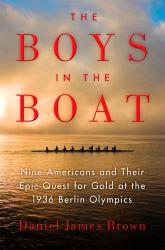
If you love books about the true American spirit, you must read Daniel James Brown's narrative-nonfiction book The Boys in the Boat. The book follows the life of Joe Rantz who was abandoned by his family during The Great Depression. It follows his journey as a teen going to the University of Washington and becoming a member of the 1936 Olympic rowing crew that won the gold medal for America. They were boys from working-class backgrounds who beat the odds and beat the very elite team of Adolf Hitler. The book is immersed in intriguing details of Joe’s life. This can be attributed to the fact that Brown was able to interview Joe in his frail, elderly years. He spent many hours listening to Joe’s daughter tell stories of her father’s experiences. Brown was also able to acquire diaries and photos from the boys on the rowing crew. Joe Rantz was very hard-working and optimistic. My favorite quote showing his optimism was: “The only time you don't find a four-leaf clover is when you stop looking for one.” The book is an irresistible account of teamwork, overcoming pain, trusting in others, endurance, and driving spirit. I chose this book because I like other books that this Author made. What I enjoyed about this book the most is how inspirational it is to the readers. It shows you can accomplish what you set out to do if you work hard at it. There isn’t a part of the book I enjoyed the least. I can relate to Joe Rantz because I work hard to achieve my goals just like he did. This is a good book and I recommend a readthrough.
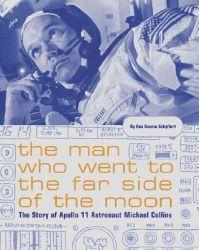
“The Man Who Went to the Far Side of the Moon” is one of the most interesting books ever written! Bea Uusma Schyffert’s unique scrapbook style presents the story of Michael Collins, the Apollo 11 astronaut who faithfully piloted the spacecraft as his two teammates became the first men on the moon. Perfectly capturing every thought and detail through pictures, infographics, and prose, “The Man Who Went to the Far Side of the Moon” pulls the reader into the story and lets them see it through Collins’ eyes. It even includes notes written by Collins himself. This is by far the best account of the forgotten hero in the history of astronomy.
“The Zoo on the Mountain” is an inspiring historical tale of The Cheyenne Mountain Zoo. This book follows the famous Coloradoan zoo and its owners through the highs and lows of its existence. Starting with Spencer Penrose’s first bear and carrying through the disastrous flood from the mountain above, the impeccably accurate accounts of this book portray the humble mountain zoo in its true light. “The Zoo on the Mountain” is a interesting and mentally moving piece of literature. It’s a zooful of knowledge!
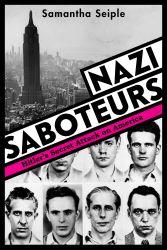
Nazi Saboteurs is a book about this group of boys who try to stop the evil of the nazis. Through this novel they face many difficult situations that they overcome with the support of others. The book includes pictures that assist the reader to grasp a better understanding of the text. Nazi Saboteurs was released in December of 2019 and has two hundred twenty-four pages that tell of hardships, action, and suspense. It is important to not forget the past, even if it was not ethical. This story shows the light in the darkest times. I hope you enjoy reading it as much as I did.
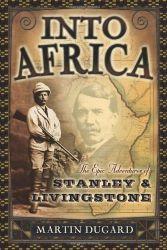
Into Africa, written by Martin Dugard, details the epic adventures of Stanley Livingstone and his trek across Africa to find the source of the Nile River. Livingstone battles disease, unfriendly tribes, and stubborn porters (the people who help carry supplies) in his journey. The brutal, but beautiful march encompasses Africa from it sweltering hot savannahs to it thick rainforests. I would recommend this book to anyone who likes adventure because this book is about the exploration of Africa. I enjoyed this book because it taught me a lot more about Africa and it's people.
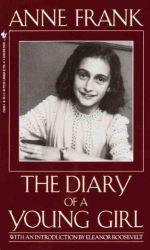
"Diary of a Young Girl" is the poignant and haunting diary of Anne Frank, a Jewish teenager hiding from the Nazis during World War II. Anne chronicles her life in hiding in Amsterdam, where her family sought refuge in a secret annex. Through her diary entries, she shares her hopes, dreams, fears, and frustrations, providing an intimate account of the daily struggles and emotional turmoil endured by Jews in hiding. I enjoyed the book; having experience the Covid-19 shutdown, the atrocity that she had to go through put my life into perspective. Sometimes what individuals go through is difficult, but is nothing compared to horrors experienced by others. I recommend everyone to read this book because it fosters a sense of humility in all that read it.
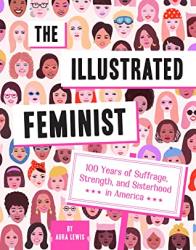
This is a great book to learn more about important female figures in America if you don't have time to read long biographies. The book is organized into decades, with an informative page for each individual. The illustrations are colorful and compliment the writing well. The book discusses significant milestone's in women's history as well as the drawbacks. It draws attention to privilege and the need for even more progress, particularly in the workforce. Try this book if you are interested in feminism and its values!
Grade 12

If you're looking to get educated on LGBTQ+ history, this is a great book to try. I loved hearing about some of the most influential figures of the LGBTQ+ movement and their impact on others. They persevered even through backlash from events like the AIDS epidemic and built a community where everyone is welcome to be themselves. Some parts can get slow to read, but the authors use modern language and humor to appeal to a variety of audiences and make history more entertaining. This book is so empowering, give it a try!
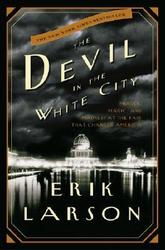
This is a compelling story of the popular World's Columbian Exposition in Chicago and the serial killer who took advantage of it. Set in the late 1800's, David Burnham and H. H. Holmes receive equal attention in alternating chapters between the fair's fascinating architecture and the growth of a heartless killer. I liked reading about the trials and errors of the fair and technology in the 19th century. Also, Holmes' terrifyingly calm demeanor added suspense to what would happen to his victims. It is a cool turn-of-the-century book, but the shift between monotone construction and graphic murders was an interesting style that isn't for everyone.
Grade 11
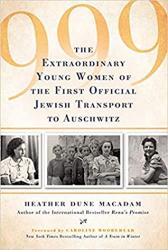
I wavered between a 4 and 5 star review here, but my reviews are based on storytelling ability, not necessarily how little I enjoyed hearing about the details of Auschwitz. This author did a fantastic job of telling the stories of nearly 1,000 women while letting some of their personal accounts lead the pace and tone. Though the characters were hard to keep track of at some points, there was constant clarification of individuals to develop empathy for the girls in the Holocaust. There was also some groundbreaking information on the sexist disparities between records of the female experience in Auschwitz- as soon as you think life couldn't have been worse for these prisoners, it is revealed that women were treated the absolute worst. Definitely worth the read if you can stomach the tragedy.
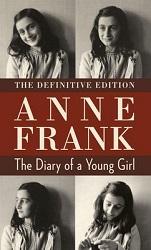
The Diary of a Young Girl is a series of diary entries written by Anne Frank, a young girl who recounts her experiences during the Holocaust. Anne writes her experiences using memorable quotes, and even through her tough experiences, still manages to write with a sense of hopeful optimism, and Anne's belief in the world and humanity are both inspiring and tear-jerking. Anne writes in the voice of a young girl but also writes in an astonishingly real and mature way. Reading her diary entries will educate all readers on what it was truly like to live through the Holocaust, and will help those who want to be informed to be more educated on the event. The Diary of a Young Girl carries out the message of hope and teaches readers the horrors of history. All age groups should most definitely read this novel, as it holds majorly valuable lessons and will hopefully teach all audiences not to repeat our past mistakes.
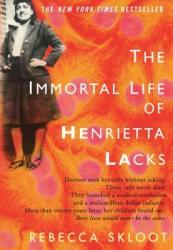
The Immortal Life of Henrietta Lacks, written by Rebecca Skloot, is a book detailing the life of Henrietta Lacks. Henrietta Lacks unknowingly donated her cells to one of the most important fields of research, cancer cures. Her tumor cells, also known as “HeLa”, are extraordinary in that they replicate fast enough to create a whole new human in under 48 hours. This book is fascinating in more than one way: it explores the history of her and her cells, and it explores some gray areas in rights to cells and parts of dead entities. Instead of focusing just on one topic and one family, it expands to include many that have had to deal with bio material rights. I personally found this an interesting but slightly disturbing read. I recommend reading this one to learn about the history of cell rights and their gray areas.
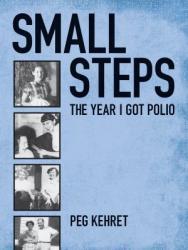
In this amazing autobiography, Peg tells the story about how she got polio and cheated death. When Peg found out she had polio her life changed. When she got to the hospital, she was terrified! When Peg meet her roommates, she realized that this was not the end of the world. She fights her battle with polio and wins it with the help of doctors therapists and her family. This book will entertain with ages from 6 to adult! I defiantly recommend this to read is your looking for a short great read.
Reviewer Grade: 7
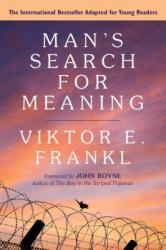
Man’s Search for Meaning gives a rare perspective on life during the Holocaust. Psychiatrist Viktor Frankl was forced into four different labor camps during WWII, and ultimately survived, while his family members were all slaughtered. Most books from the Holocaust are centered around horror stories from prison camps, and the sheer brutality of one of human history’s most devastating genocides. Frankl gives the psychiatrist’s view on life after camp and works to answer one essential question - how do we move on from grief? He recounts the moment he was free to leave as confusing - almost more shocking than freeing. What do you do after your entire family is killed? Where do you go after being released from a death camp hundreds of miles from home?
The book’s storytelling is devastating and beautifully crafted, and its exploration of humanity’s search for lives worth living - lives significant for the individual - has become one of America’s most influential pieces of literature. The book is heartbreaking, but so is any story worth telling. It has everything to be expected from such a terrifying chapter in our history, but what makes it so unique is the way it addresses life after the terror ends. Anyone wanting to search for meaning in their own lives, or at the very least get a new perspective on the Holocaust, needs to read this.

This book is one of the most inspirational stories I've ever read. The journey put forth, following William, is truly a gem that makes you think about what could've happened if something had been different. I loved reading it because I felt every details of William's journey to develop his windmill that put him on fame. His determination to prove that science is 'real' and can make a difference, especially during a time and in a culture that rejects it, shows his character and his want for a better life in his land. He perseveres through the struggles of drought and hunger, and overcomes the ridicule thrown from all sides to be able to rise up and rise above, and make his visions come true. A really inspirational story, that shows a hero's journey in a way not usually thought.
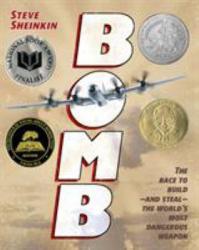
Bomb: The Race to Build—and Steal—the World’s Most Dangerous Weapon by Steve Sheinkin is a must-read for history buffs everywhere. It features the history of nuclear science, including the first nuclear reactors and the building of the initial Manhattan Project team. It follows the progress of the Manhattan Project, while also detailing US and Soviet efforts to prevent German bomb development. It speaks of the heroism of commandos destroying enrichment facilities, and the long nights pulled by sleep-deprived scientists, as well as the fantastic power of the first Trinity tests. I enjoyed this book very much and would recommend it to anyone with an interest in nuclear or WWII history.
Reviewer Grade: 11
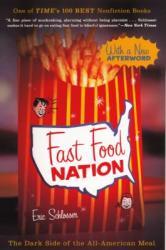
Fast Food Nation is a nonfiction book that is extremely informative about the fast food industry. The book starts with the history of fast food and then informs the audience of business deals, the horrors of fast food, and ways the fast food industry affects others. I picked this book because I wanted to know the truth to what happens in the fast food industry and all of the gross things that are done to the food. Fast Food Nation has several local and state references from Cheyenne Mountain to Greeley, Co. I really liked this book since it was outstandingly educational about every aspect of the fast food industry such as the meat industry, fast food employees, advertising, food poisoning and more; however, I would have liked it more if it went even more in-depth about all the ways the food is handled. Overall, I recommended this book if you want a good nonfiction read and if you want to be more educated about the five to ten dollar meal you buy frequently.
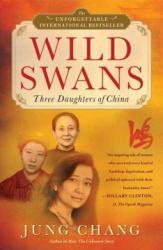
Jung Chang recalls the experiences of her grandmother, her mother, and finally herself, all in distinct eras of China in Wild Swans. While the book is about Chang's family and the hardships they faced under changing authorities, the account is just as much about the consequences of ideologies, and how our loyalties shape who we are. Chang describes the brutalities of Japanese occupation, as well as the callous nature of China under Mao Zedong. The book is slow at first but becomes thrilling with the rise of Mao, and Chang's detailing of life under Communism. Highly recommended for those interested in learning more about China in the twentieth century.

The Narrative of the Life of Frederick Douglass, an American Slave by Frederick Douglass illustrates Douglass's life during slavery in Maryland and his attempts to make it to freedom. This narrative demonstrates the horrific situations/events and the terrible way slaves were treated throughout the time period of slavery way deeper than the average history text book. The narrative is extremely informative about life's of slaves since it goes into specifics about slaves being born, their living quarters, amounts of food, the masters, etc. It is very difficult to relate to or know exactly how a slave was treated in this time period; however, this book allows readers to understand the hideous and fearful actions that were taken against these human beings. This narrative brought tears to my eyes and shocking expressions to my face when reading certain real events that took place. Overall, I really enjoyed this book and it was extremely well written because it allowed me to see more than what is taught in an American History class because Frederick Douglass goes so in-depth about his experiences in slavery throughout the narrative.
Reviewer grade: 11
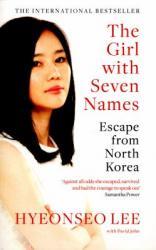
Hyeonseo Lee is a young woman who was able to escape North Korea after years of determination and courage. Lee explains in great detail the brainwashing she and all other North Koreans have gone through and how they continue to be treated by their oppressive government. She also offers an insight into the daily life of a North Korean and thoroughly explains that the indoctrination is not the fault of the people, but the tyrannical governments. At the young age of 17, Lee must leave everything she has known behind as she escapes on her own and makes her way across the North Koreans and Chinese border (intending to make South Korea her final destination). While on the run, Lee realizes that her journey may not be as easy as she expected. Following her successful mission, she is able to flourish even more than she originally envisioned. As you read this book, you'll finally learn why she came to be known as "the girl with seven names."

Permanent Record is the memoir of Edward Snowden life. Snowden was the man who exposed and leaked how the US government used mass surveillance on enemies but also US citizens. Snowden knew so much of this system as he
was a former employee of the CIA. I choose this book because it's nonfiction and about an important event that happened recently. I also chose Permeant Record because I love reading about politics and government. This book
definitely surprised me because of Snowden's reasoning and motivation of why he did what he did. I liked Permanent Record because the readers get a first person perspective of the events that unfolded. Although I liked the book, I
disliked how Snowden's actions endangered the lives of several American spies, and other government officials.
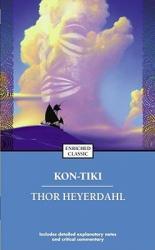
Kon-Tiki is a novel about a group of men who sail across the ocean on a polynesian raft with the bare necessities for life. Using barely any modern resources, like a GPS or Emergency SOS, they set sail in the early 1950’s. They wanted to prove that it is possible to sail to polynesia in a raft. The beginning was a little rough for me, as it was about the preparation, the, and the support behind the project. I disliked them going into so much detail about the raft they were trying to copy. They were trying to copy the exact rope, the exact bamboo, the exact position of launch, and the exact shape. If you are a story lover like me, it starts out rough, but it turns into a fabulous journey towards the middle. I enjoyed this book because of the sense of adventure and the sense of
exploration. It describes the adventure of meeting the Whale Shark with a passionate sense of adventure, describing the people on board being panicked at first, then treating it as a kind of puppy. This is a favorite of mine, due to the fact that the adventure was both interesting and thrilling. I recommend this book to anyone that is looking for an adventure on the sea.
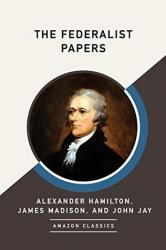
The Federalist Papers are one of the most fundamental documents in US history. It is not only an explanation of the functions of the Constitution, but it is a gateway into the minds and personalities of the founding fathers John Jay, Alexander Hamilton, and James Madison. I learned more about the Constitution than I ever thought possible. I learned the amazing complexities that were built into the most important document in the United States and the intended purposes of the three branches of government, as well as the arguments for increased federal power in governments. I would certainly recommend it to anyone who wants to learn about the foundations of American government and the minds of its founders.
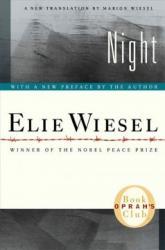
The autobiography Night by Elie Wiesel is a gripping nonfiction retelling of his experiences during the Holocaust. Starting with Elie’s normal life before World War II and continuing onto the horrors of the concentration camps. Elie was a young boy growing up in the town of Sighet, Romania when he was taken to a concentration camp with his family. The book saddens me every time I read it. It draws the reader in and makes them feel as though they were there, starving in a camp or trudging across the frigid wilderness with no end in sight. I would recommend Night not because it makes the reader happy but because it is the best depiction of the horrors of the Holocaust.
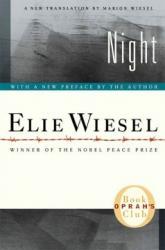
I had to read this book in English class Freshman year. I honestly wasn't expecting to like it as much as I did. It's a true story called "Night" written first hand by Elie Wiesel about the Holocaust. It's about a young boy and his family that got sent to Auschwitz and Buchenwald concentration camps. This book is extremely well written, and is a really sad story. There was one part, I won't spoil it, but I couldn't stop crying. "Night" really gives you a look at what it would have been like to be in Elie's shoes. Overall, of course this is quite a sad book, but I would highly highly recommend!!
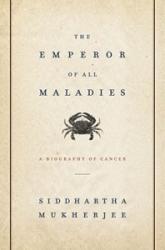
The Emperor of all Maladies is an informative and gripping history of cancer. Starting with the first recorded cases in ancient times and the remedies used by ancient doctors and progressing to the medical breakthroughs of chemotherapy and radiation, the book provides a wealth of information in a riveting tale. Dr. Siddhartha Mukherjee tells the stories of cancer’s most prominent adversaries like Dr. Sidney Farber as they work to develop life-saving treatments and procedures. The book is quite lengthy but kept me engaged throughout while teaching me about cancer history and treatment in a form that feels more like a novel than a textbook. If you want to learn more about one of the most prolific diseases in human history while viewing history through the lens of cancer researchers, The Emperor of all Maladies is perfect for you!
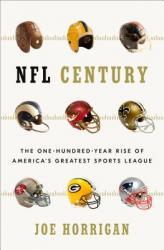
NFL Century is a book about the lengthy history of the National Football League. Joe Horrigan gives a brilliant overview from the earliest days of the NFL to now. This book is also not just about the history but about the rise of American football to the pinnacle of American sports. The author beautifully describes how football overthrew baseball as America's favorite sport. I loved this book because I am a huge football fan and I was happy to learn to more about NFL history. I would highly recommend this book if you enjoy reading about sports or history.
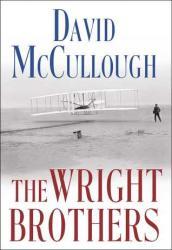
Wilbur and Orville Wright changed history in 1903 when they successfully built the first heavier-than-air powered machine that could fly and carry a pilot. Many people are familiar with the Wright brothers, but few know the full story of their quest to build the first flying machine and prove to the world that they were not far-fetched fanatical dreamers. Writtenusing Wilbur and Orville Wright's letters, diaries, technical data books, documents, proposals, and private family papers, this book gives great insight into the curiosity, intellectual ability, diligence, and determination of the brothers. This book is well-written, readable, and exciting, yet still incredibly factual. I highly recommend this book for anyone fascinated with aviation, engineering, or the quintessential American spirit.

An American Original Walt Disney by Bob Thomas is a masterful biography which tells the story of the man who created Mickey Mouse, along with one of the largest entertainment franchises the world has ever seen. It describes how Walt started as a small-town cartoonist, went through bankruptcy, had his work stolen, and even borrowed money on his life insurance to make his ideas become reality. It was fascinating to see how things like Disneyland and Mickey Mouse originated. While some biographies are extremely dull, this one captivated me from the start. It is written in a way that makes it easy to experience what Walt and his company are going through, whether it is success or failure. Entertaining as well as factual, this book is one of my favorite biographies. I would give this book five stars and would recommend it to anyone who would like to read about one of the most interesting men in the world.

I knew that AP US history would be a difficult class with lots of information. Since the beginning of the school year, I've been trying various resources to see which will prepare me the most for the APUSH exam. From browsing YouTube channels to finding online practice tests, I haven't found a resource as valuable as this book. Another helpful piece to this resource is that, with the book, you can access the online website. On the website there are even more quizzes over the various units. I am so glad I found this resource and I am certain it will help me a lot when it comes time for the big test! I strongly recommend. Grade 11